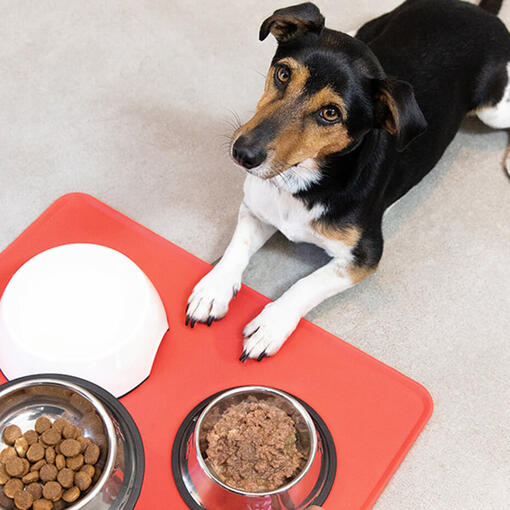
When you get a new dog, your life will change considerably, and one of the most significant changes is likely to be the daily walks your pup will require. Getting out in the fresh air is great for both you and your dog, as it gives you both a chance to exercise and burn off steam, stave off boredom with novel sights, sounds and sniffs, and it’s also a great opportunity for bonding between you and your four-legged friend.
In the majority of cases, every pup should go on at least one walks each day. But how often should you walk a dog – and for how long? The answer depends on a few factors including breed, temperament, health, and age. Read on to find out how you can ensure your dog gets the perfect amount of daily exercise.
How often should you walk your dog?
All dogs need at least one walk outside every day – for both physical exercise and enrichment. But when it comes to more energetic breeds, you will need to walk them more frequently, and for longer periods of time. Younger dogs are more active than older companions, and so age also plays a role in how often you need to walk your dog. Older dogs and dogs with injuries or chronic illnesses such as dog arthritis may need to walk more slowly, and might only manage a short walk at a time, so keep their health condition in mind too. If you think your dog may be struggling to walk, get in touch with your vet as there are often treatments, such as pain medication and joint care tablets, that can make walking easier and more comfortable.
And remember, every dog is unique, so needs will vary even among canines belonging to the same breed. But it’s still worth being aware that some breeds are more naturally active than others.
A good rule of thumb is to look at what your dog’s breed or type were originally bred to do. If that job involved working all day, every day, then you can be sure they are going to need a lot of exercise! If however, their original job was as a companion, then they will probably be happy with less.
Some energetic dog breeds who often need multiple walks a day
- Golden Retriever
- Siberian Husky
- Labrador Retriever
- Border Collie
- German Shepherd
- English Springer Spaniel
- Cocker Spaniel
Example dog breeds who normally only need one or two shorter walks a day
However, as we’ve already mentioned, this is only a rough guide to cover these breeds, rather than a hard and fast rule. In reality, individuals from each of these breeds may need more or less exercise daily.
If your dog has any health conditions or are becoming less mobile, it’s important to ask your vet about the frequency and duration of dog walks that are suitable for your individual pup. And – if you’ve got a specific breed in mind – check out our dog breed library for an in-depth look at breed-specific exercise requirements.
How often should you walk a dog in the winter?
Most of the working breeds in the UK, are well designed for our usual winters – and are far keener to get out there than their owners! Many become more active when the temperatures drop and enjoy an active whizz around without getting over heated. Once again, think about the job they were originally bred to do – but more importantly, where they were bred to do it! That will give you strong clues to how well they can adapt to the cold – or whether they’d far prefer a sofa day!
When winter days get particularly cold and icy, it may be best to consider limiting even your active dog’s daily walk to 20-30 minutes several times a day – unless they are well adapted to colder climates – for example, the Siberian Husky has a thick, dense coat to help to protect this breed from winter chills.
Winter coats designed for dogs are also a great pup accessory for cold weather, especially if your companion doesn’t have a thick fur coat naturally. But, if temperatures get below freezing, it’s best to find ways to keep your dog active indoors or in a sheltered garden and go outside only for very short bursts of time, protecting their paws as much as possible from ice and salt – and always making sure you dry them properly when you return from your walks.
And, if you’re trying to think of ways to have fun with your pup indoors during the colder months, check out our list of fun indoor games for dogs.
How often should you walk a dog during the summer?
Your dog needs the same amount of exercise and enrichment in the summer as they do at all other times but on especially warm days, aim for early mornings and cooler evenings to avoid the hot temperatures in the middle of the day. Especially watch out for hot pavements which can easily burn a dog’s delicate pads.
Always make sure you have water with you, as well as access to shade so your pup can rest if they’re feeling too hot even for short walks around the neighbourhood. This is another time when walks should be short and more frequent – so you can make sure your dog doesn’t overheat.
If you notice your pup is slowing down during walks in the hot weather, not wanting to walk at all, panting excessively, whining or trying to lie down or turn back, these can all be signs that they are getting too hot, so it’s best to stop walking and give them a break somewhere cool and away from the sun.
If you own a brachycephalic breed, it is best to avoid walking on hot days (apart from early morning walks) and instead look at indoor games and enrichment exercises.
How often should you walk a puppy?
When puppies are still very young, they are unvaccinated and so can’t go outside, and are happy playing in the house or in the garden, so won’t initially need to be walked on a lead (apart from your training sessions).
Your pup won’t be freely able to get out and about until at least two weeks after their vaccinations have finished, as this is when they will be protected against the nasty diseases that they can pick up outside. Find out more about when can puppies go outside in our article, but make sure to check with your vet too as there are several different vaccination protocols they might be using.
Once they can get out and about, they are still developing, and walking on a lead is physically tiring and while they may seem to have loads of energy, this can put a strain on growing muscles and joints. As a general rule, puppies should have no more than five minutes of on lead walking exercise for each month of age, two times a day. So, a five-month-old puppy would have no more than 25 minutes lead walking twice a day. However, this will again depend on your individual puppy with some pups needing more or less exercise.
This exercise doesn’t include indoor play time – so don’t think you have to stop your puppy doing the zoomies just because they have had their ‘exercise time’. Play time involves lots of stops and starts, rests whenever needed, and doesn’t put the same physical strain on growing bodies and brains.
Going on daily dog walks is a huge part of being a dog owner. Walks are a wonderful opportunity to spend bonding time together with your pup and they will also help to keep both of you fit and healthy. If you have any concerns about your pup’s exercising routine or physical fitness, you can check with your vet to make sure your dog is getting enough daily walks for their breed, age, fitness and energy levels.
Want to know more about taking puppies for walks and the importance of loose lead training? Check out our article on how to walk dogs and puppies on lead.


















